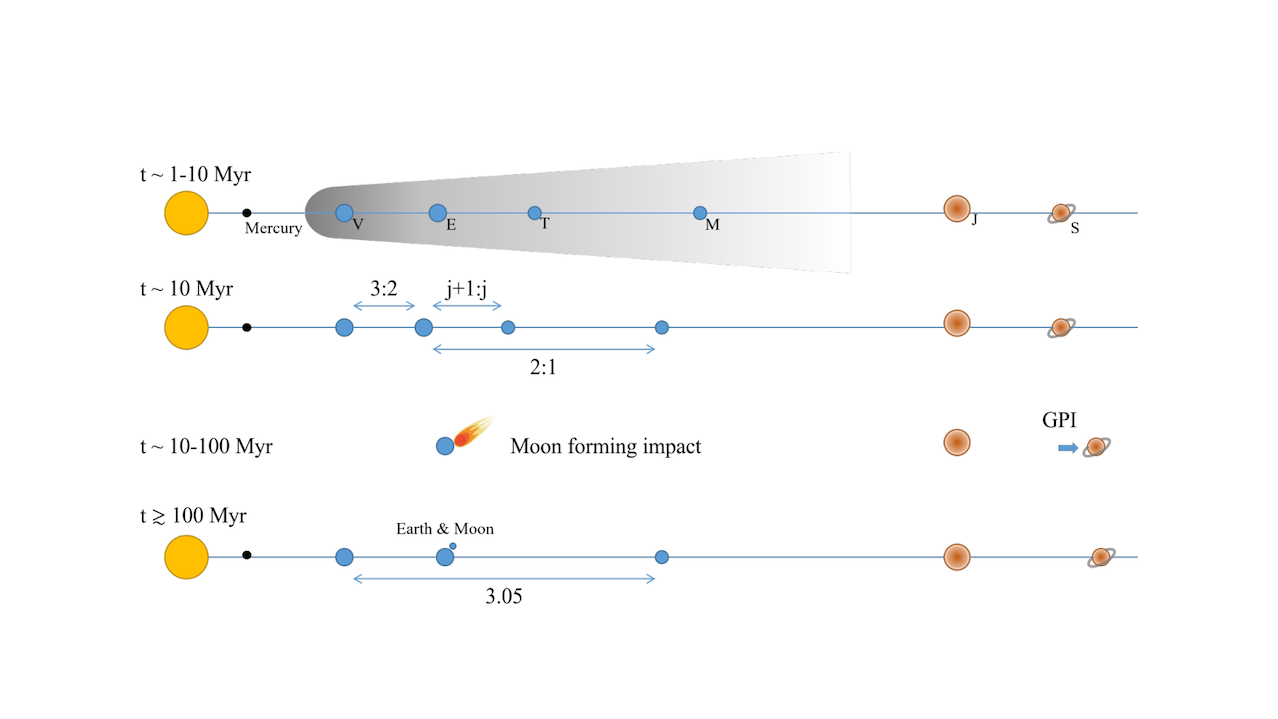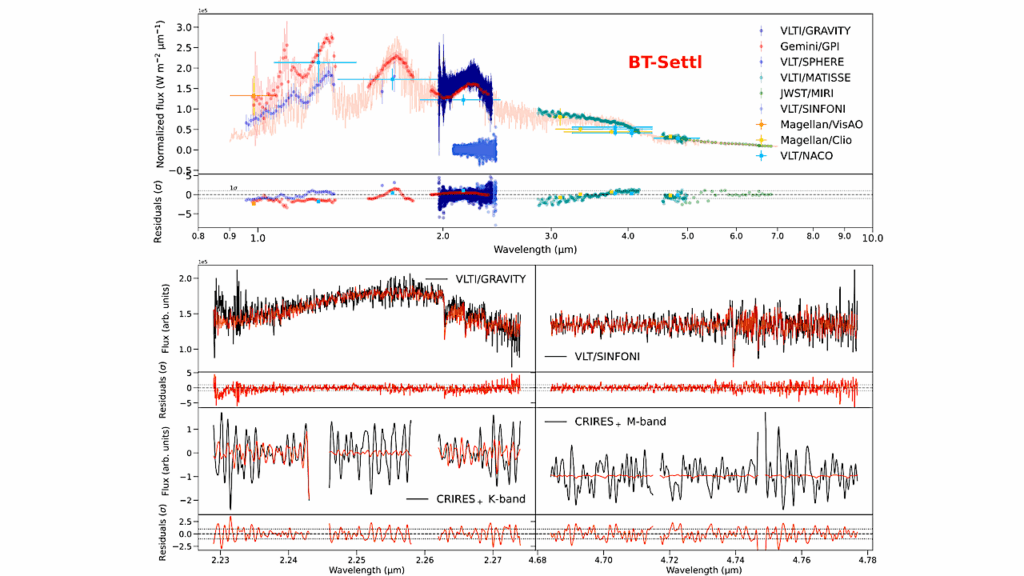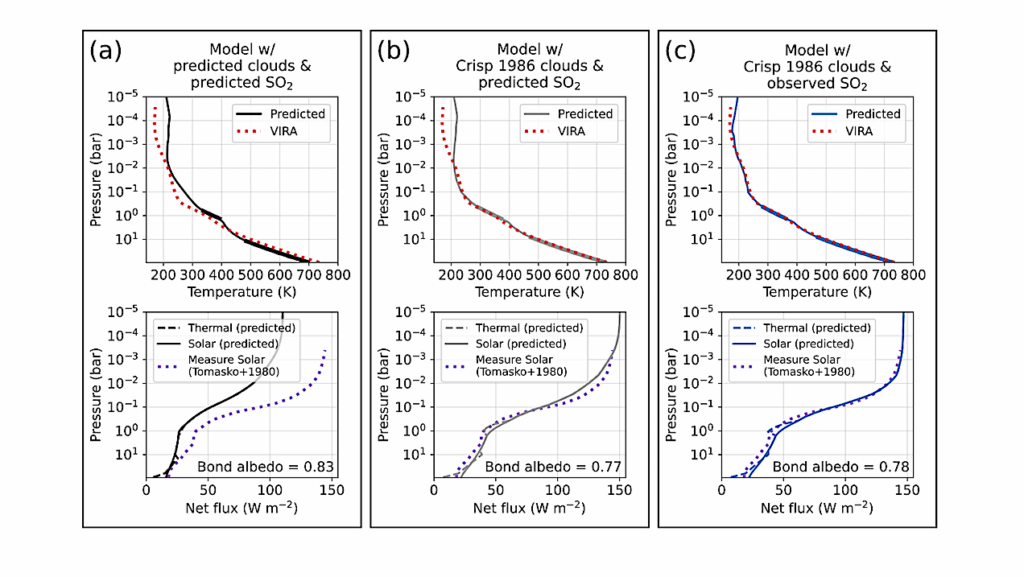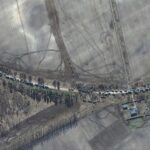Now Reading: A Resonant Beginning For The Solar System Terrestrial Planets
-
01
A Resonant Beginning For The Solar System Terrestrial Planets
A Resonant Beginning For The Solar System Terrestrial Planets


Sketch illustrating the dynamical evolution of the solar system planets during and after disk dissipation. The two-sided arrows represent the existence of mean motion resonances. Blue and brown scatters represent terrestrial bodies, including Venus (V), proto-Earth (E), Theia (T), and Mars (M), and gas giants including Jupiter (J) and Saturn (S). In the disk phase (t ≲1 Myr), terrestrial planets form and migrate convergently. Theia and Earth are in j + 1 : j resonance, where j is the resonance number. At t ≳ 1 Myr, i.e., just after disk dispersal, planets are still locked in a resonance chain. At t ∼ 10 Myr, the outward migrating Saturn excites Jupiter, triggering the giant planet instability (GPI), which also destabilizes the resonance chain and triggers the moon-forming giant impact. After t ∼ 100 Myr, the planets stabilize to the current architecture. — astro-ph.EP
In the past two decades, transit surveys have revealed a class of planets with thick atmospheres — sub-Neptunes — that must have completed their accretion in protoplanet disks.
When planets form in the gaseous disk, the gravitational interaction with the disk gas drives their migration and results in the trapping of neighboring planets in mean motion resonances, though these resonances can later be broken when the damping effects of disk gas or planetesimals wane. It is widely accepted that the outer Solar System gas giant planets originally formed in a resonant chain, which was later disrupted by dynamical instabilities.
Here, we explore whether the early formation of the terrestrial planets in a resonance chain (including Theia) can evolve to the present configuration. Using N-body simulations, we demonstrate that the giant planet instability would also have destabilized the terrestrial resonance chain, triggering moon-forming giant impacts in 20–50% of our simulated systems, dependent on the initial resonance architecture.
After the instability, the eccentricity and inclination of the simulated planets match their present-day values. Under the proposed scenario, the current period ratio of 3.05 between Mars and Venus — devoid of any special significance in traditional late formation models — naturally arises as a relic of the former resonance chain.
Shuo Huang, Chris Ormel, Simon Portegies Zwart, Eiichiro Kokubo, Tian Yi
Comments: resubmitted to ApJ
Subjects: Earth and Planetary Astrophysics (astro-ph.EP); Geophysics (physics.geo-ph)
Cite as: arXiv:2506.04164 [astro-ph.EP] (or arXiv:2506.04164v1 [astro-ph.EP] for this version)
https://doi.org/10.48550/arXiv.2506.04164
Focus to learn more
Submission history
From: Shuo Huang
[v1] Wed, 4 Jun 2025 17:02:18 UTC (3,289 KB)
https://arxiv.org/abs/2506.04164
Astrobiology,
Stay Informed With the Latest & Most Important News
Previous Post
Next Post
-
 012024 in Review: Highlights from NASA in Silicon Valley
012024 in Review: Highlights from NASA in Silicon Valley -
 02Panasonic Leica Summilux DG 15mm f/1.7 ASPH review
02Panasonic Leica Summilux DG 15mm f/1.7 ASPH review -
 03How New NASA, India Earth Satellite NISAR Will See Earth
03How New NASA, India Earth Satellite NISAR Will See Earth -
 04Astronomy Activation Ambassadors: A New Era
04Astronomy Activation Ambassadors: A New Era -
 05And Thus Begins A New Year For Life On Earth
05And Thus Begins A New Year For Life On Earth -
06SpaceX launch surge helps set new global launch record in 2024
-
 07Space Force plans new ‘Futures Command’ amid pressure to speed up modernization
07Space Force plans new ‘Futures Command’ amid pressure to speed up modernization





















